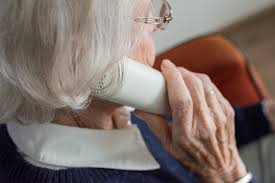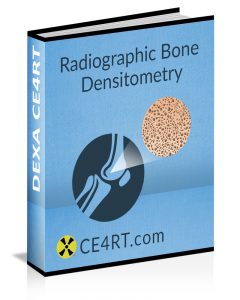Help elderly patients understand nutrition for bone health

Osteoporosis is especially prevalent in older adults. Healthcare professionals play a valuable role in the prevention, diagnosis, and treatment of bone diseases in this age group of patients. In general, the nutritional guidelines for younger adults are also applicable to older adults. However, some specific recommendations are relevant to this group of patients in terms of nutrition and bone health in the elderly.
As a person ages, the absorption of calcium and vitamin D decreases. Also, older individuals oftentimes have limited mobility and inadequate exposure to sunlight, making them more prone to developing a deficiency of vitamin D. For these reasons, the recommended daily intake of both these nutrients is higher for people over the age of 50.
It is estimated that serologic vitamin D deficiency is present in nearly 60 percent of older adults. As mentioned before, young adults and middle-aged individuals should consume 1,000 mg of calcium every day; however, it is recommended that older adults above the age of 50 should consume 1,200 mg of calcium every day.
Bone Healthy in Older Individuals: Role of Healthcare Professionals
Healthcare professionals should educate older adults about their higher nutritional needs to prevent bone loss. This is an important component of counseling regarding nutrition and bone health in the elderly. Older individuals should also be informed on properly reading and understanding food labels to estimate calcium content. It is noteworthy that the calcium content on food labels is expressed as a percentage of the recommended intake for younger adults, i.e., as a percentage of 1,000 mg. Because the target intake for older adults is more than 1,000 mg, they must consume greater than 100 percent of the recommended daily amount of calcium mentioned on food labels.
Use of Supplements in the Elderly
When it comes to nutrition and bone health in the elderly, many people in this age group take supplements to augment their diet. An important consideration in older adults who obtain calcium from supplements is that constipation is a common side effect. Therefore, healthcare providers should advise older adults to obtain calcium from food sources as much as possible. They should also encourage increased fiber and fluid intake.
Moreover, in older adults with achlorhydria (inability to produce stomach acid), calcium carbonate supplements are suboptimally absorbed. In these individuals, calcium citrate supplements should be recommended on account of better absorption. Health professionals should also advise their older patients that all calcium supplements are absorbed better when consumed with meals.
Recommendations for Vitamin D in Older Adults
It is recommended that individuals above the age of 50 intake 400 IU of vitamin D per day and individuals above the age of 70 intake 600 IU of vitamin D per day. Healthcare providers should be aware of this increased need when counseling patients about nutrition and bone health in the elderly.

This higher intake of vitamin D is oftentimes difficult to achieve from food sources alone. Health professionals should, therefore, advise older adults to supplement their dietary vitamin D with multivitamins containing this essential nutrient. This is especially true for individuals with a low consumption of foods that contain vitamin D and/or individuals with limited sun exposure. Measurement of circulating vitamin D levels should be considered in at-risk individuals. Health professionals may need to prescribe pharmacologic doses of vitamin D to restore levels in older adults with a deficiency of this nutrient.
Other Nutrients for Bone Health
In addition to calcium and vitamin D, there are several other nutrients that are essential for adequate nutrition and bone health in the elderly. The recommendations for older individuals with regards to these micronutrients are similar to young and middle-aged adults. Note should be made, however, that protein supplementation in older individuals with hip fractures has been found to improve healing and lower the rate of mortality. Therefore, healthcare providers caring for hip fracture patients should include a nutritional consultation as part of the rehabilitation.
Further Reading
Need for bone densitometry testing
Advice for patients with osteopenia
X-ray Continuing Education
We offer a range of online courses for X-ray continuing education. To earn ARRT®-recognized X-ray CE and complete biannual requirements, please purchase one of our e-courses. For example, our Mammography Review e-book and test is worth 15 CE credits. Our bone densitometry online course will earn you 23 category A credits recognized by the ARRT® and other national and state registries. Browse our selection of e-courses and choose the type and number of credits you need.
Here is more information about ce credits for radiology
